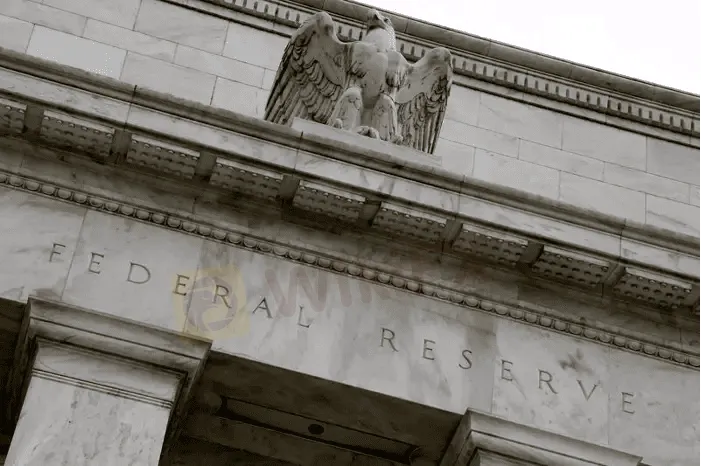简体中文
繁體中文
English
Pусский
日本語
ภาษาไทย
Tiếng Việt
Bahasa Indonesia
Español
हिन्दी
Filippiiniläinen
Français
Deutsch
Português
Türkçe
한국어
العربية
Marketmind: Full steam a-Fed
Abstract:A look at the day ahead in Asian markets from Jamie McGeever

Some of the developed world‘s central banks might be nearing peak rates and preparing to pivot – Australia’s and Canadas spring to mind – but not the Fed.
Not. At. All.
The U.S. central bank announces its latest interest rate decision on Wednesday, and if Tuesdays manufacturing ISM index and latest job openings data are any guide, the Fed will deliver a fourth consecutive 75 basis point increase.
The forecast-beating reports were one in the eye for recessionistas, who had noted that the Feds favored recession-warning yield curve had just inverted.
Wall Street slumped into negative territory following a positive open, and the Feds implied terminal rate in rate futures markets spiked back up to 5%.

Investors appear to be back to the view that good (economic) news is bad (interest rate and market) news, but they had started the first trading day of the new month on a more optimistic footing.
Speculation spread through markets that China could soon reopen from strict COVID-19 curbs, a move that would likely give the global economy an immediate and substantial boost.
An unverified note on social media said a “Reopening Committee” has been formed by a Politburo Standing Member, which is assessing various reopening scenarios and could relax COVID-19 rules in March 2023.
This would be a rare and welcome bit of good news from China following months of negative headlines on the countrys exchange rate, housing sector, financial markets and political outlook.
The yuan slid to a new 15-year low before recovering and Chinese stocks rebounded on the news too, while the MSCI Asia ex-Japan surged more than 2.5%. That was its best day since March.
Markets will likely be on edge Wednesday, however, as investors position for the Fed.
Three key developments that could provide more direction to markets on Wednesday:

Disclaimer:
The views in this article only represent the author's personal views, and do not constitute investment advice on this platform. This platform does not guarantee the accuracy, completeness and timeliness of the information in the article, and will not be liable for any loss caused by the use of or reliance on the information in the article.
Read more

How to Use Retracement in Trading
Understanding retracement is essential for strategic trading. In today’s article, we will focus on the retracement is a temporary, short-lived pullback in the price of a financial instrument, like a stock or an index, that occurs within a larger, established trend. Think of it as a brief pause or a correction before the market continues its original movement. Unlike a trend reversal, which signals a fundamental shift in direction, a retracement represents a temporary deviation that doesn't jeopardize the long-term trend.

What Is Indices in Forex? A Beginner’s Guide to Trading Forex Indices
Understand what indices in forex are, how DXY works, key differences vs pairs, pros/cons, and where to trade CFDs—beginner-friendly, expert-backed guide.

Malaysian Finfluencers Could Face RM10 Million Fine or 10 Years in Prison!
A new regulatory measure by the Securities Commission Malaysia (SC) is set to change the country’s online trading and financial influencer landscape. Starting 1 November 2025, any trader or influencer caught promoting an unlicensed broker could face a fine of up to RM10 million, a prison sentence of up to 10 years, or both.

Juno Markets: A Closer Look at Its Licenses
When selecting a broker, understanding its regulatory standing is an important part of assessing overall reliability. For traders seeking to protect their capital, ensuring that a platform operates under recognised and stringent oversight can make all the difference. Keep reading to learn more about Juno Markets and its licenses.
WikiFX Broker
Latest News
What Is Indices in Forex? A Beginner’s Guide to Trading Forex Indices
How to Use Retracement in Trading
CySEC warns the public against 17 investment websites
Robinhood Moves Toward MENA Expansion with Dubai DFSA License Application
FBI Issues Urgent Warning on Crypto Recovery Scams
European leaders to join Zelensky at White House meeting with Trump
Fake Trader Faces 20 Years & RM9 Million Fine for RM1.45 Mil Derivatives Scam
Complaints Against Weltrade | Traders Can’t Get Their Money Back
WikiFX Community Event Series, “Thailand Elites’ View”
Juno Markets: A Closer Look at Its Licenses
Currency Calculator


